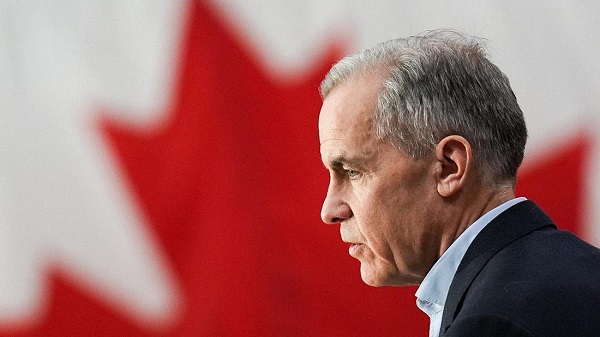International
Is Russia at War With Ukraine, or With the West?
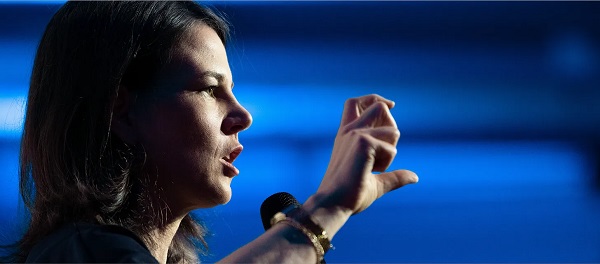
|
German Foreign Minister Annalena Baerbock this week, on entering a “new era of nefariousness”:
I say clearly and across the Atlantic, what is right and what is wrong shall never be irrelevant to us. No one wants and no one needs peace more than the Ukrainians and Ukraine. The diplomatic efforts of the U.S. are of course important here. But such a peace must be just and lasting and not just a pause until the next attack… We will never accept a perpetrator-victim reversal. A perpetrator-victim reversal would be… the end of security for the vast majority of countries. And it would be fatal for the future of the United States.
Baerbock’s declaration that a “perpetrator-victim reversal” (a Täteropferumkehr, I’m reliably informed) would be “fatal” to the U.S. was historic. It was accompanied by a promise that “as transatlantacists,” Europeans must “stand up for our own interests, our own values, and our own security.” Although new leaders are ready to take the reins in Germany, she said, there can be no waiting for the transfer of power. Immediately, “Germany must take the lead at this historic milestone.”
A few years ago Baerbock pleaded for patience with a British conservative who demanded to know why Germany wasn’t providing Leopard tanks to Ukraine.
Now, with Donald Trump cutting off weapons deliveries and shutting down access to ATACMS missiles, Baerbock’s speech is an expression of more enthusiastic European support for continued fighting.
The war in Ukraine is often called a proxy conflict between Russia and the West or Russia and the U.S., but it increasingly looks more like a fight between Baerbock’s “transatlanticists” and those who believe in “spheres of influence.” In preparing Racket’s accompanying “Timeline: The War in Ukraine,” I found both sides articulated this idea repeatedly.
In January, 2017, as he was preparing to relinquish his seat to Mike Pence, Joe Biden alluded to the recent election of Donald Trump in a speech at Davos. Describing the “dangerous willingness to revert to political small-mindedness” of “popular movements on both the left and right,” Biden explained:
We hear these voices in the West—but the greatest threats on this front spring from the distinct illiberalism of external actors who equate their success with a fracturing of the liberal international order. We see this in Asia and the Middle East… But I will not mince words. This movement is principally led by Russia.
Biden even then lumped Trump and Putin together, as enemies of the “liberal international order.” Russian counterparts like Putin and Foreign Minister Sergei Lavrov, meanwhile, spoke of a “post-West world order” where diplomatic relations would be based on “sovereignty” and the “national interests of partners.” These are two fundamentally irreconcilable worldviews. Was conflict inevitable, or could peace have held if Russia didn’t strike in 2022?
There’s no question who invaded whom. Hostilities began in February, 2022 with an angry speech by Vladimir Putin and bombs that landed minutes later in Ukraine. Little discussion of the “why” of the war took place in the West, however.
Phrases like “unprovoked aggression” became almost mandatory in Western coverage. Politico interviewed a range of experts and concluded that what Putin wanted was “a revanchist imperialist remaking of the globe to take control of the entire former Soviet space.” This diagnosis of Putin’s invasion as part of a Hitlerian quest for Lebensraum and a broader return to national glory might have merit, but it was also conspicuously uncontested. A differing article by University of Chicago professor John Mearshimer declaring the crisis “the West’s fault” made him, as The New Statesman just put it, “the world’s most hated thinker.” Few went there after.
Russians and Ukrainians don’t have the typical profiles of ancient warring tribes. They have a deeply intertwined history, with citizens of both countries retaining many of the same customs, jokes, and home remedies, while living in the same crumbling Soviet buildings, with fondness for the same cabbage soup and moonshine. There are huge numbers of mixed/bilingual families and many famous cultural figures (including my hero Nikolai Gogol) are claimed by both countries. They’ve fought before, but what jumped out reviewing this “Timeline” is how much it seemed that these old Slavic neighbors mostly fall out now over attitudes toward the West.
It’s hard looking back not to be struck by the superior tone of bodies like the Organization for Security and Co-operation in Europe (OSCE), whose “reviews” of Ukrainian and Russian elections often read like zoological descriptions of inferior species. Same with a tsk-tsking report by a mission of visiting IMF economists in 2013, who were appalled by Ukrainian energy subsidies that were among of the few popular remnants of Soviet life.
These imperious Western assessments of childlike Slavs, and the panic and shame of some local officials before such foreign judgments, recall familiar satires in Russian literature (The Government Inspector comes to mind). Nationalists in both countries balked at this “advice,” and by the late nineties some came to the conclusion that the cost of cooperation with the West was greater than the benefit. These dynamics accelerated after the Orange Revolution in 2004 and the Maidan events of 2013-2014, which Russians still see as a West-backed coup and the beginning of the current war. Russians will say “first blood” was drawn in military operations against Donbass protesters around the same time. Those in the West will point at the 2014 annexation of Crimea as the beginning of territorial war.
The idea of Germany “taking the lead” in a war to secure the primacy of “transatlanticists” worries me more than trying to pronounce Täteropferumkehr. However, whether or not you think Baerbock is right, and a peace deal now would be a worthless “pause,” depends a lot on how you read this history. What do you think, and why?
Crime
Canadian Sovereignty at Stake: Stunning Testimony at Security Hearing in Ottawa from Sam Cooper

Canada’s Border Vulnerabilities: Confronting Transnational Crime and Legal Failures
The Bureau has chosen to publish the full opening statement of founder Sam Cooper before the House of Commons Standing Committee on Public Safety and National Security, during the session titled “Canada–United States Border Management,” held on Tuesday, October 7, 2025, and webcast live at https://www.ourcommons.ca/
https://www.ourcommons.ca/Committees/en/SECU/Meetings?utm_source=substack&utm_medium=email
I offer these remarks and recommendations with humility. I’m still learning every day. I speak regularly with numerous law-enforcement and security professionals in both the United States and Canada. For over a decade, I’ve focused professionally on the threats that transnational crime poses to Canada’s borders, institutions, and people, alongside deep reporting on our financial and legal vulnerabilities to threat networks that often include ties to hostile state activity. Canada’s recent terror designation of the India-based Bishnoi gang is important. But that particular action recognizes only one facet of the many-sided transnational fentanyl, human-trafficking, Chinese-supplied chemical precursor, weapons-trafficking, terror and extremism threats that I will discuss today.
Across hundreds of interviews with Canadian and U.S. experts, I have come to a conclusion: many Canadians — including citizens, lawmakers, and judges — do not yet fully understand the scope and nature of the problem, and also seem defensive in engaging it. And if we don’t understand it, we cannot solve it.
In these politically divisive times, I hope I can add value by relaying, clearly and fairly, what professionals on both sides of the border are saying about the cultural, legal, and political differences that impede cooperation between the United States and Canada. My reporting has emphasized Canadian enforcement challenges — not to be unduly critical of my homeland, but because I think we should focus first on the levers we control, and reforms we should have already tackled decades ago.
This isn’t my opinion only. As you know, Canadian Association Police Chiefs president Thomas Carrique recently warned that police are being asked to confront a new wave of transnational threats with “outdated and inadequate” laws “never designed to address today’s criminal landscape.” He added that Canada would have been far better positioned to “disrupt” organized crime had Ottawa acted on reforms first recommended in the early 2000s.
As RCMP Assistant Commissioner David Teboul said this year after the discovery of major fentanyl labs in British Columbia — notable for their commercial-grade chemistry equipment and scientific expertise — “There’s a need for legislative reform around how such equipment and precursor chemicals can be obtained.” More border regulations could help, but will not be sufficient absent foundational legal change.
It has long been my experience in discussions with senior U.S. enforcement experts that American and Australian police can collaborate effectively because the two nations are able to authorize wiretaps on dangerous transnational suspects within days. In Canada, that speed is impossible, and it has become a major obstacle.
As former RCMP investigator Calvin Chrustie testified before British Columbia’s Cullen Commission several years ago, due to judicial blockages arising from Charter of Rights rulings, it had become practically impossible to obtain timely wiretaps on Sinaloa Cartel targets in Vancouver. In recent years, such delays in sensitive investigations have undermined cooperation between the RCMP and the U.S. Drug Enforcement Administration in major cases of fentanyl trafficking and drug money laundering. In 2017, I was personally alerted to these longstanding concerns about the breakdown in RCMP–DEA cooperation by a U.S. State Department official.
These impeded investigations have involved the upper echelons of Chinese Triads, which maintain deep global leadership in Canada and align with Chinese state-interference networks, as well as senior Iranian and Hezbollah-linked networks operating here. Both networks are engaged in fentanyl trafficking and money laundering in collaboration with Mexican cartels active in Canada.
Canada must urgently reform what it can fix on our side.
My first recommendation is this — there is no “low-hanging fruit.” I have not spoken to a single knowledgeable Canadian officer — current or former — who believes that simply spending more on personnel, equipment, training, or border staffing will solve this. What I hear is that, from ten to twenty years ago, before the evolution of Charter-driven disclosure and delay jurisprudence in Canada, our nations enjoyed a much closer enforcement relationship. Experts point above all to two Supreme Court rulings — Stinchcombe and Jordan — as the core legal obstacles. Our Stinchcombe disclosure standards and Jordan time restrictions, as applied, disincentivize complex, multi-jurisdictional cases and deter U.S. partners from sharing sensitive intelligence that could be exposed in open court. Veterans describe enterprise files stalling for lack of approvals or because specialized techniques are denied. When police and prosecutors anticipate disclosure fights they cannot resource — and trial deadlines they cannot meet — the rational choice is to avoid the fight altogether.
I can explain in greater detail, but without question these rulings have devastated Canada’s ability to prosecute sophisticated organized crime. The result is a vicious circle of non-prosecution and impunity. To deny the need for deep legal reform is to deny the depth of the problem.
To sum up, my reporting at The Bureau has highlighted interlocking failures — legal, political, and bureaucratic — that have turned Canada into a permissive platform for synthetic narcotics and criminal finance, badly misaligning us with our Five Eyes law-enforcement and intelligence partners, and bringing us to the brink of a rupture with the United States.
Thanks for your attention, Chairman and Members.
The Bureau is a reader-supported publication.
To receive new posts and support my work, consider becoming a free or paid subscriber.
Crime
The Bureau Exclusive: Chinese–Mexican Syndicate Shipping Methods Exposed — Vancouver as a Global Meth Hub
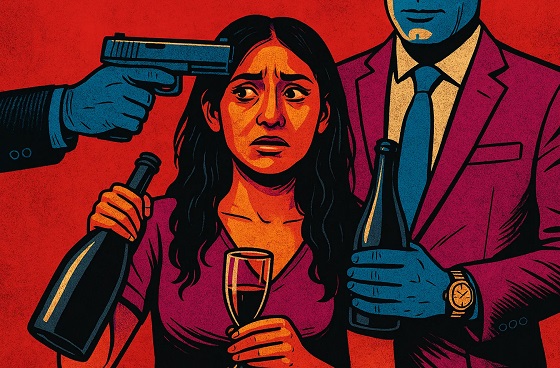
Canada has become a strategic transshipment and production hub for synthetic narcotics sourced from China’s chemical and Triad-linked supply base, feeding the lucrative Pacific drug markets.
The case of Fatima Qurban-Ali, a 30-year-old Canadian sentenced recently in New Zealand for attempting to import nearly 10 kilograms of crystal methamphetamine on a flight from Vancouver — coerced at gunpoint by a transnational drug syndicate, the court heard — has illuminated a troubling global pattern.
Across a series of recent prosecutions, New Zealand Customs records and sentencing reports show that Canada — particularly Vancouver’s port and airport — has become a major node in the production and shipment of synthetic narcotics by networks supplied through China-based syndicates and Mexican cartels.
Qurban-Ali, an immigrant from Afghanistan whose brother worked as a translator for U.S. and New Zealand forces, arrived in Auckland from Vancouver on December 8, 2024, carrying a red duffel bag filled with packages wrapped in festive paper. Inside, Customs officers found 9.9 kilograms of methamphetamine with an 80 percent purity — a haul valued at roughly NZ$2.9 million.
At her sentencing in Manukau District Court, the judge accepted that Qurban-Ali had acted under threat of violence. Evidence showed she had been lured under false pretences — told she would provide “bottle service” for wealthy clients at a private event similar to ones she’d worked in Vancouver — only to be threatened at gunpoint when she tried to back out.
Her lawyer said Qurban-Ali, an honours graduate who had worked with Indigenous communities in Canada, was “extremely susceptible and vulnerable” to manipulation. Her brother, an interpreter for the U.S. military who once assisted New Zealand forces in Afghanistan, has been missing since 2021.
The judge agreed her case was consistent with coercive recruitment — “how international syndicates tend to obtain their couriers and custodians” — and imposed a three-year, two-month sentence. But as New Zealand’s Stuff reported, her story was part of a larger trend. Just thirty minutes earlier, another Canadian, David Blanchard, was convicted for smuggling a similar quantity of methamphetamine — his crime driven by addiction and the promise of quick money.
Also in August 2025, Customs records show, authorities intercepted a 124-kilogram shipment of methamphetamine concealed in machinery parts shipped by air freight from Canada and allegedly linked to the Auckland-based Killer Beez gang. The drugs’ street value exceeded NZ$37 million.
Police said the operation — dubbed Vault — followed a series of “dry runs” in June consisting of machine-part shipments from Canada designed to test border vulnerabilities.
In September 2025, a 23-year-old Canadian woman received six years’ imprisonment after Customs officers found 15 kilograms of methamphetamine in her luggage on a flight from Vancouver.
And from The Bureau’s earlier reporting, three men were convicted last week in the largest methamphetamine seizure ever recorded at New Zealand’s border — 713.8 kilograms of the drug disguised as maple-syrup bottles, shipped from Vancouver’s port in January 2023. That single load carried an estimated social-harm value of NZ$800 million.
The Bureau is a reader-supported publication.
To receive new posts and support my work, consider becoming a free or paid subscriber.
Together, these prosecutions reveal a striking pattern: repeated meth consignments originating in Canada, exploiting both air-cargo and passenger routes to penetrate New Zealand’s lucrative market.
Former U.S. DEA Operations Chief Derek Maltz, who led international cartel investigations under Project Sentry, told The Bureau the trend emerging in New Zealand and Australia mirrors what he has tracked globally. Chinese and Mexican criminal networks — with Chinese actors supplying chemical precursors and laundering proceeds from fentanyl, methamphetamine, and cocaine, and Mexican cartels managing large-scale production and distribution — have been shifting parts of their operations beyond Mexico, into countries including Canada.
“They’re getting inundated in Australia with cocaine. Same with New Zealand. And now, of course, they’re getting hit with fentanyl shipments. And I believe — I don’t have proof of this — that a lot of it’s coming from these Canadian production operations,” Maltz said.
His assessment aligns with mounting evidence from both hemispheres: Canada has become a strategic transshipment and production hub for synthetic narcotics sourced from China’s chemical and Triad-linked supply base, feeding the lucrative Pacific drug markets.
The deeper roots of the network now targeting New Zealand — which investigators believe include elite Chinese Triad leadership operating from mainland China, Hong Kong, and Canada — stretch back several years. In 2023, Hong Kong national Chi Pang Li was sentenced to ten years and four months in prison after a New Zealand Customs investigation uncovered a parcel-post smuggling operation that moved 20.9 kilograms of methamphetamine from Canada into New Zealand.
Investigators found nine packages of methamphetamine hidden inside tubs of protein powder, each parcel weighing more than two kilograms. All were traced to Canadian postal origins, revealing an organized trafficking route already linking Canadian exporters to Chinese supply sources.
The methods Li’s network used in New Zealand — employing fictitious names and short-term Auckland rental addresses to receive deliveries — mirror techniques seen in Canada, where chemical-precursor shipments from China are processed in a sprawling network of drug labs across British Columbia, according to The Bureau’s investigations.
A Canadian police intelligence source said Chinese networks are exploiting Canada’s Non-Resident Import system, which allows foreign nationals to receive opaque shipments from China under minimal scrutiny.
The Bureau is a reader-supported publication.
To receive new posts and support my work, consider becoming a free or paid subscriber.
Customs Manager Cam Moore said Li first entered New Zealand legally from Hong Kong in 2018 as part of a tour group but disappeared the day before departure.
“Li remained in New Zealand unlawfully and, as Customs’ investigations uncovered, he embarked on a smuggling enterprise that involved bringing significant quantities of drugs into New Zealand, which imposed both social and economic harm on our country,” Moore said.
Li’s methods — using Canadian postal channels, false identities, and short-term rental addresses in New Zealand — foreshadowed the much larger air-freight and maritime consignments that followed. His case shows that by 2020, Chinese non-resident import-export networks operating through Canada were already coordinating narcotics flows into Oceania, embedding operatives on both the export and import sides. They exploited the lighter scrutiny applied to Canadian shipments compared with direct exports from China, turning Canada into a preferred staging ground for the global synthetic-drug trade.
A Canadian intelligence source told The Bureau that shipping facilities in Richmond — a predominantly Chinese-immigrant municipality within metropolitan Vancouver that hosts both port and airport infrastructure — have become key staging points where Asian organized-crime networks package synthetic narcotics and marijuana for shipment across the Asia-Pacific and into the United States, often concealing drugs within legally traded goods such as furniture and industrial materials.
Seafood production and shipping facilities have also been used by Triad networks in Richmond and Toronto to export methamphetamine from Canada, the source said.
The Vancouver-area Chinese networks have deep ties to Beijing’s foreign-interference and intelligence arm, the United Front Work Department, according to Canadian intelligence and a report by former U.S. intelligence official David Luna.
Across North America, sources confirmed to The Bureau, transnational crime networks are using commercial-trucking fleets to move narcotics across the northern border, exploiting the sheer volume of legitimate trade between Canada and the United States.
The issue has now reached Canada’s political arena. With President Donald Trump’s administration placing renewed pressure on Ottawa over cross-border fentanyl trafficking, Parliament is debating legislation to strengthen export controls — including greater powers to inspect postal shipments and tighten border-inspection regimes.
Some North American media outlets have criticized Washington’s stance as unfairly portraying Canada as a source country for fentanyl. Yet within law-enforcement circles, the concern is real: transnational synthetic-narcotics syndicates originating in China — and operating through Latin American cartel networks — have exploited Canada’s porous ports and liberal trade systems for years.
What began with mail-order protein powder, visa fraud, and exploitation of Canada’s Non-Resident Import system — as New Zealand’s case against Hong Kong national Chi Pang Li demonstrated — has evolved into multi-tonne, containerized narcotics traffic: evidence that Canada’s Pacific gateways have become critical arteries in the global synthetic-drug economy, connecting China’s chemical suppliers, cartel logistics networks, and Oceania’s growing demand.
The Bureau is a reader-supported publication.
To receive new posts and support my work, consider becoming a free or paid subscriber.
-

 Energy1 day ago
Energy1 day agoOttawa must eliminate harmful regulations to spur private investment in pipelines
-
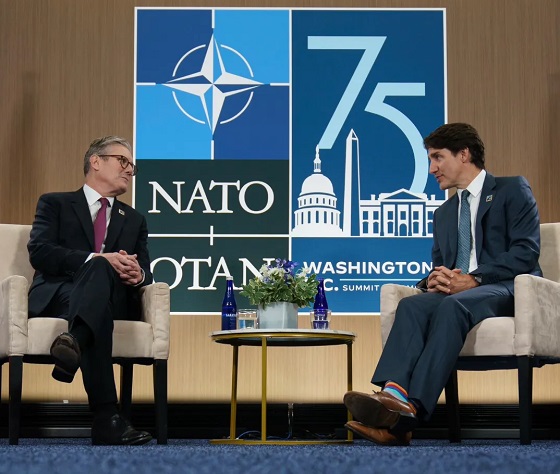
 espionage2 days ago
espionage2 days agoStarmer Faces Questions Over Suppressed China Spy Case, Echoing Trudeau’s Beijing Scandals
-
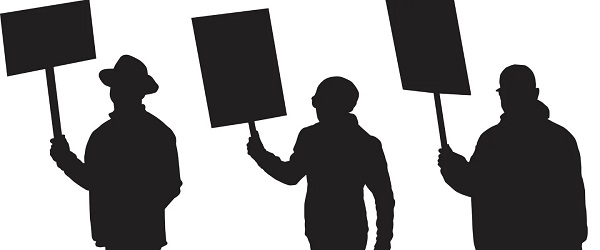
 Business1 day ago
Business1 day agoLabour disputes loom large over Canadian economy
-

 Energy21 hours ago
Energy21 hours agoBC NDP Premier Opposing a New Oil Pipeline to Tidewater
-

 Business1 day ago
Business1 day agoDaily Caller EXCLUSIVE: Chinese Gov’t-Tied Network Training Illegal Immigrants To Drive Big Rigs In US
-

 Crime4 hours ago
Crime4 hours agoThe Bureau Exclusive: Chinese–Mexican Syndicate Shipping Methods Exposed — Vancouver as a Global Meth Hub
-

 Crime3 hours ago
Crime3 hours agoCanadian Sovereignty at Stake: Stunning Testimony at Security Hearing in Ottawa from Sam Cooper
-
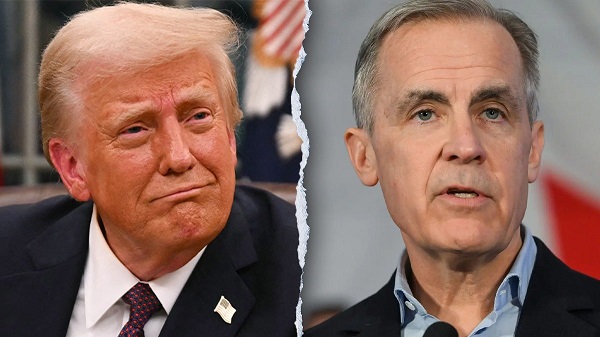
 Business22 hours ago
Business22 hours agoCarney’s Bungling of the Tariff Issue Requires a Reset in Canada’s Approach to Trump




